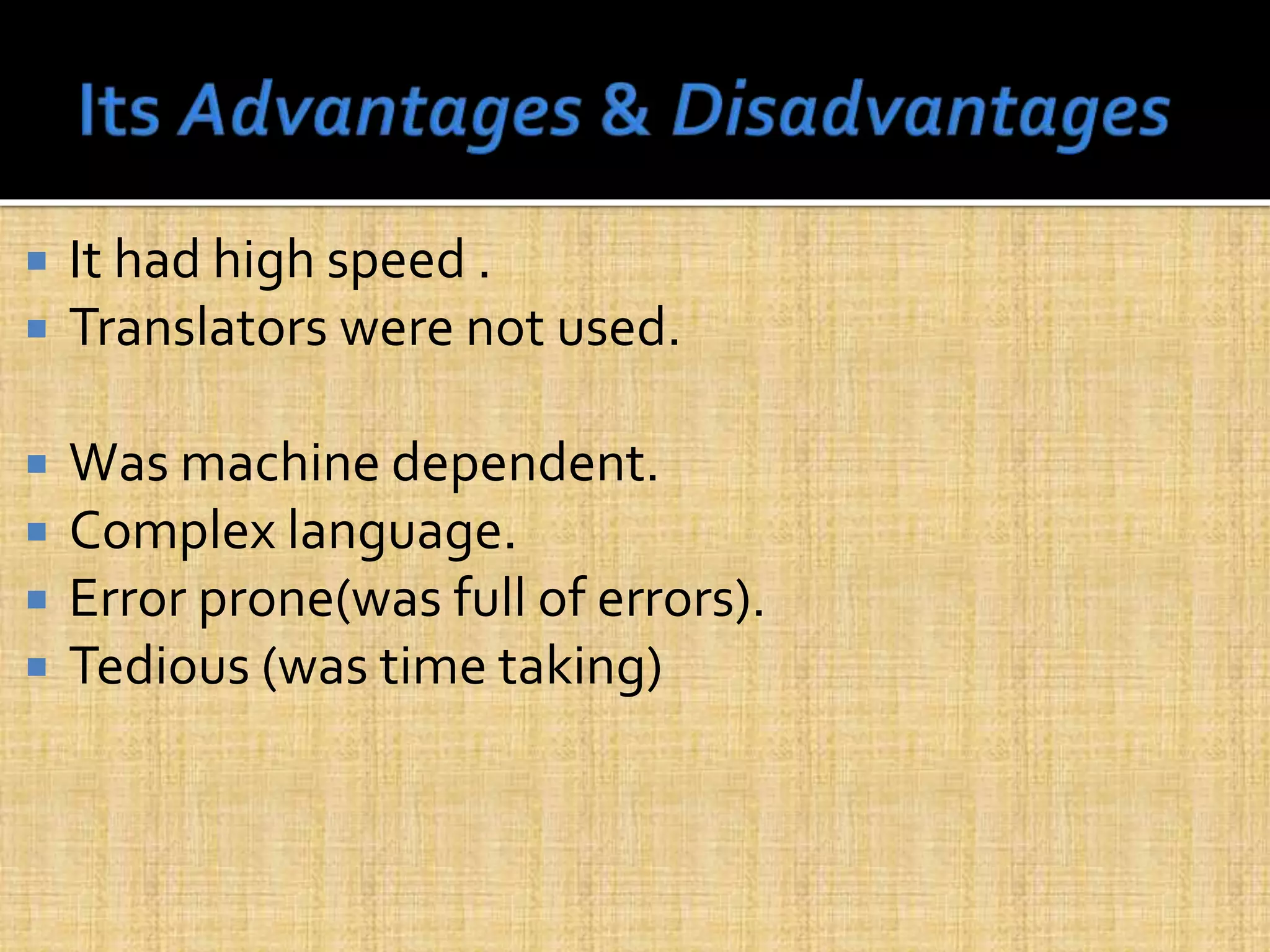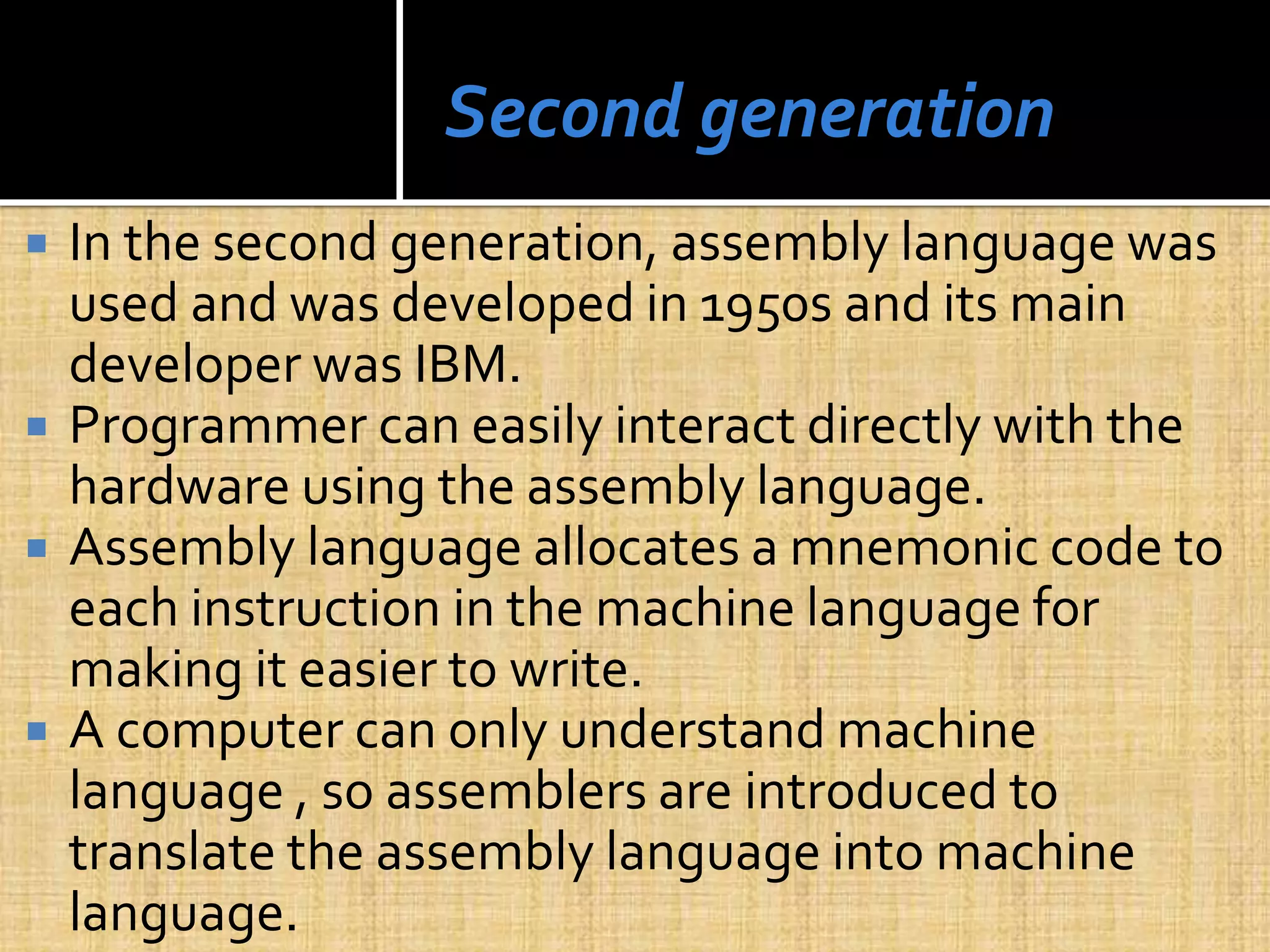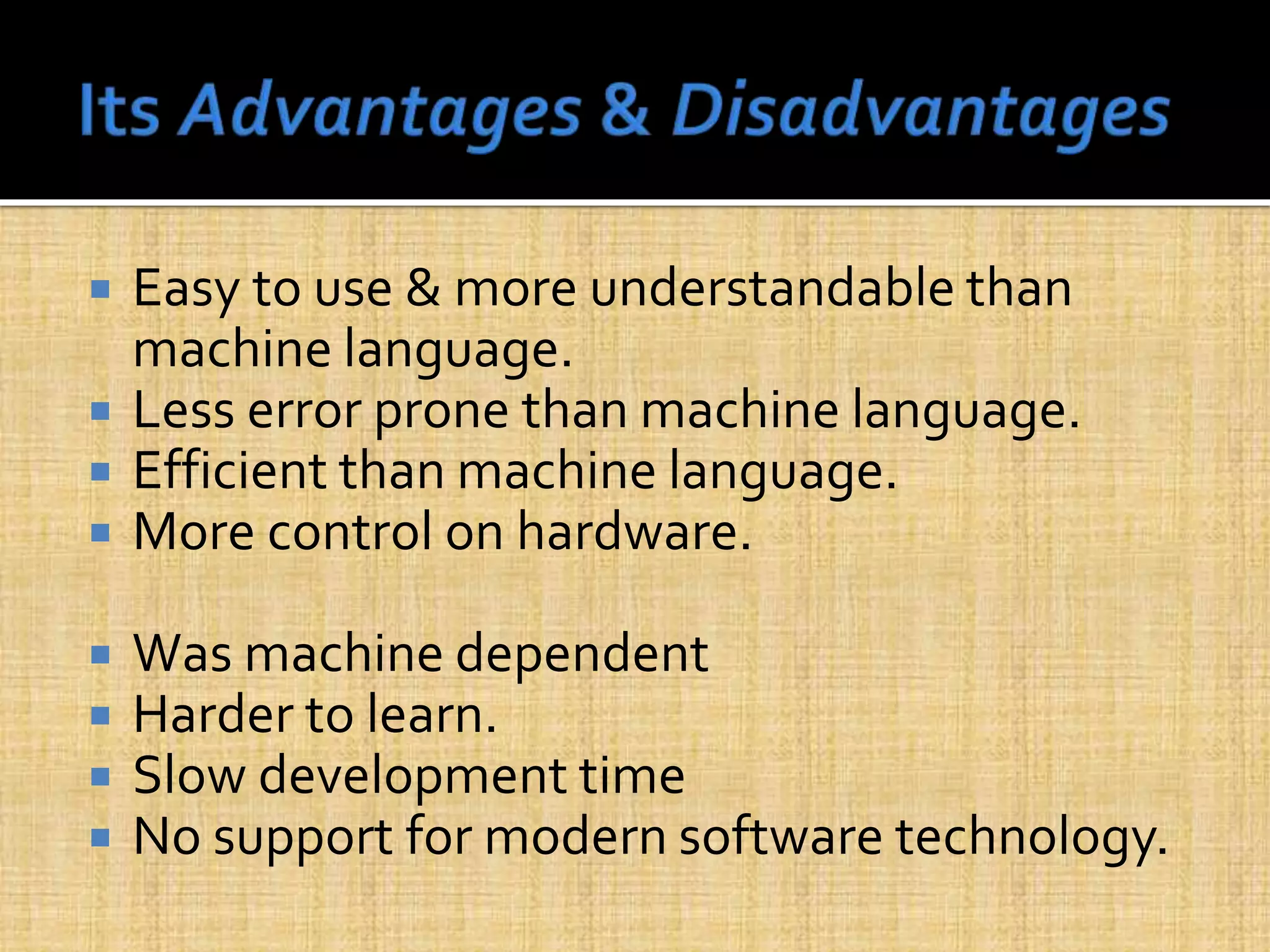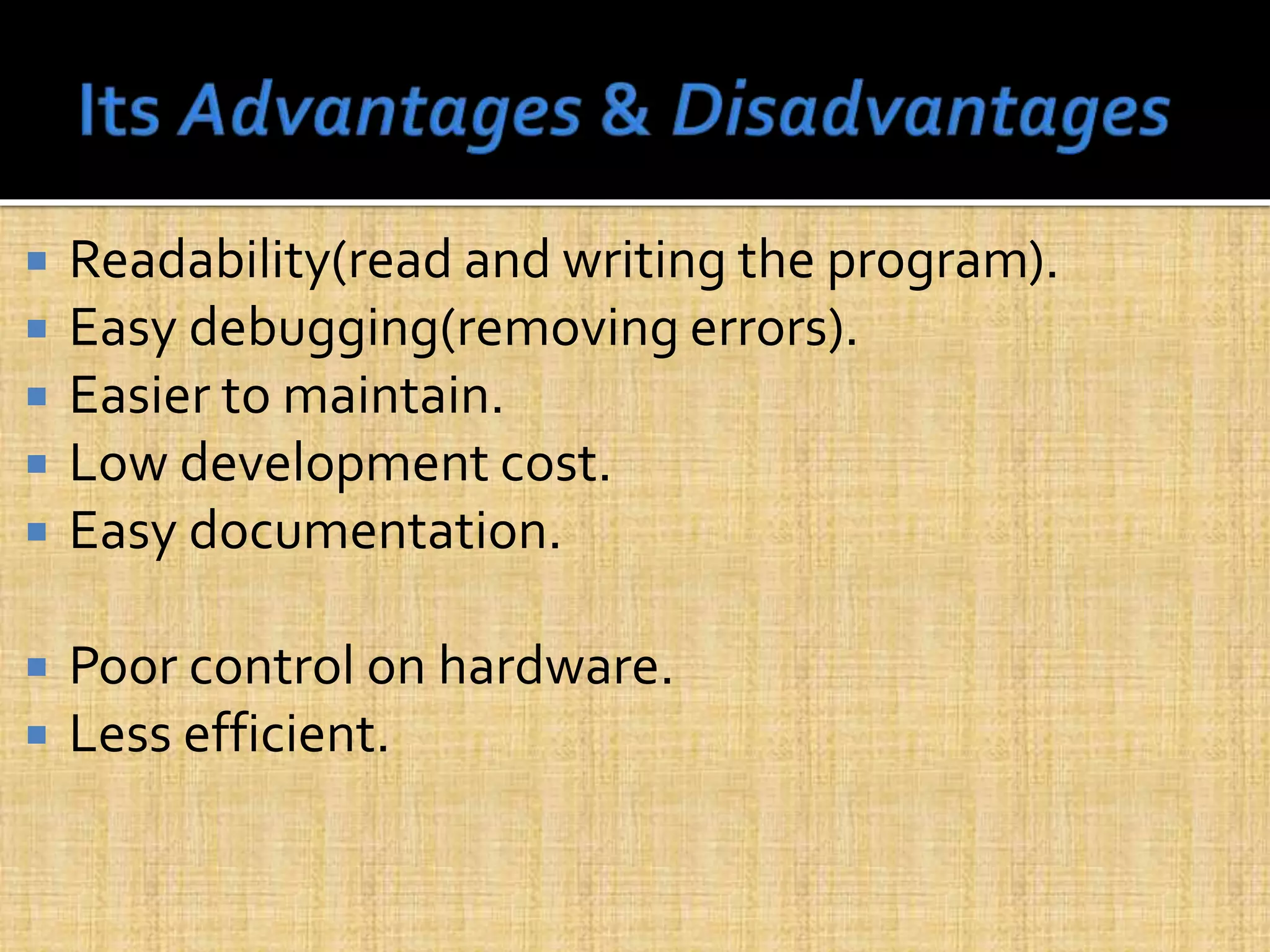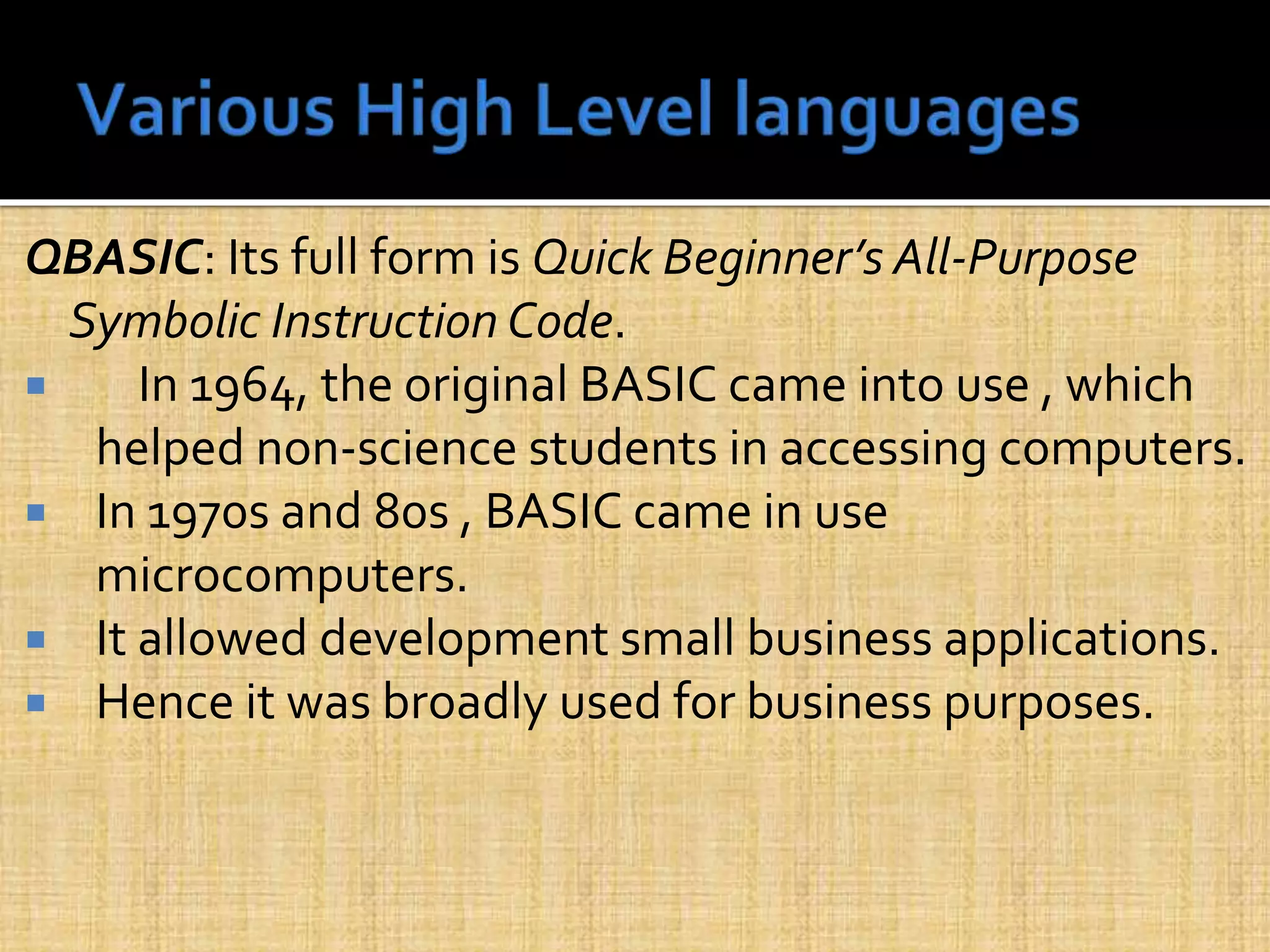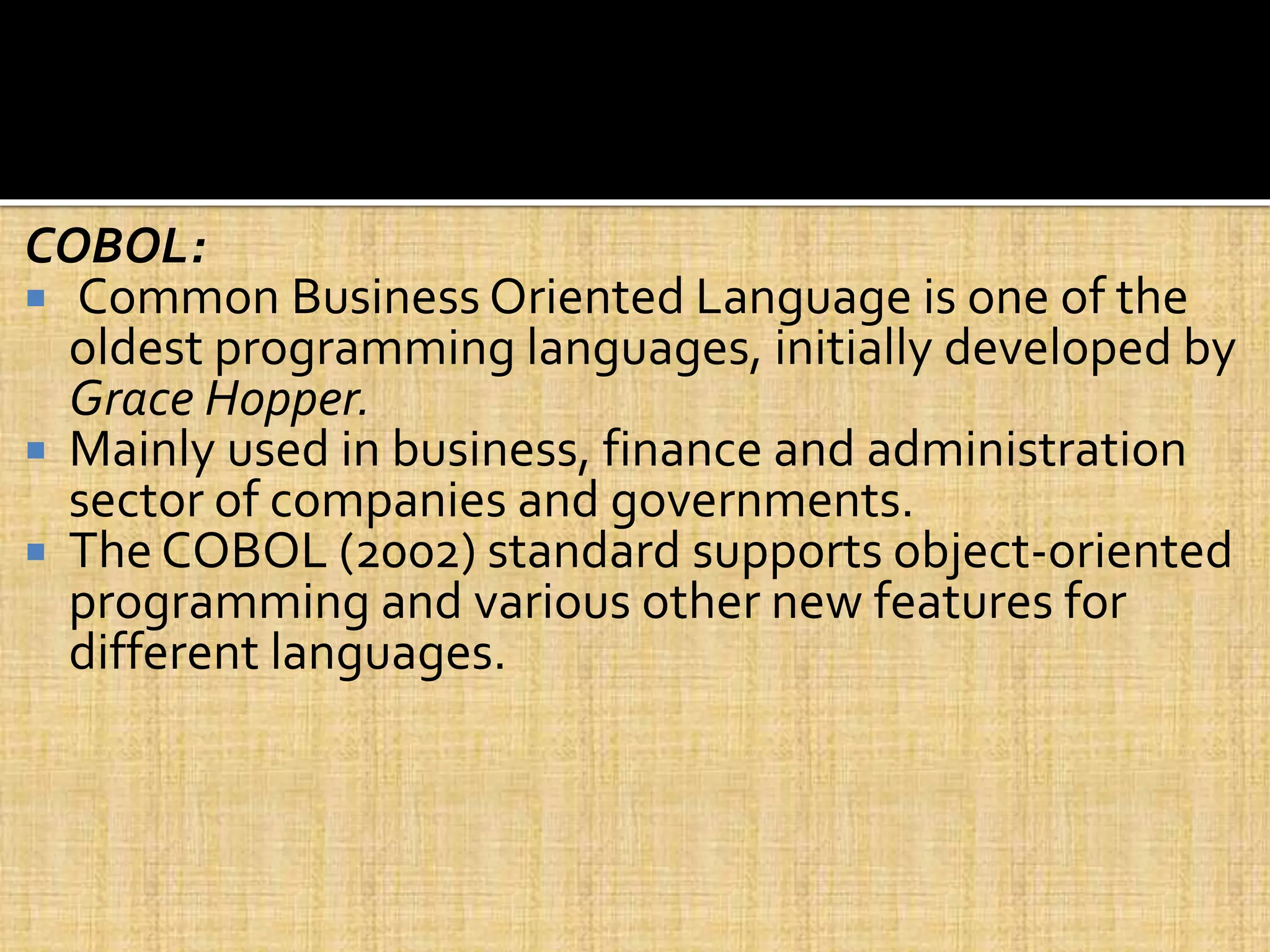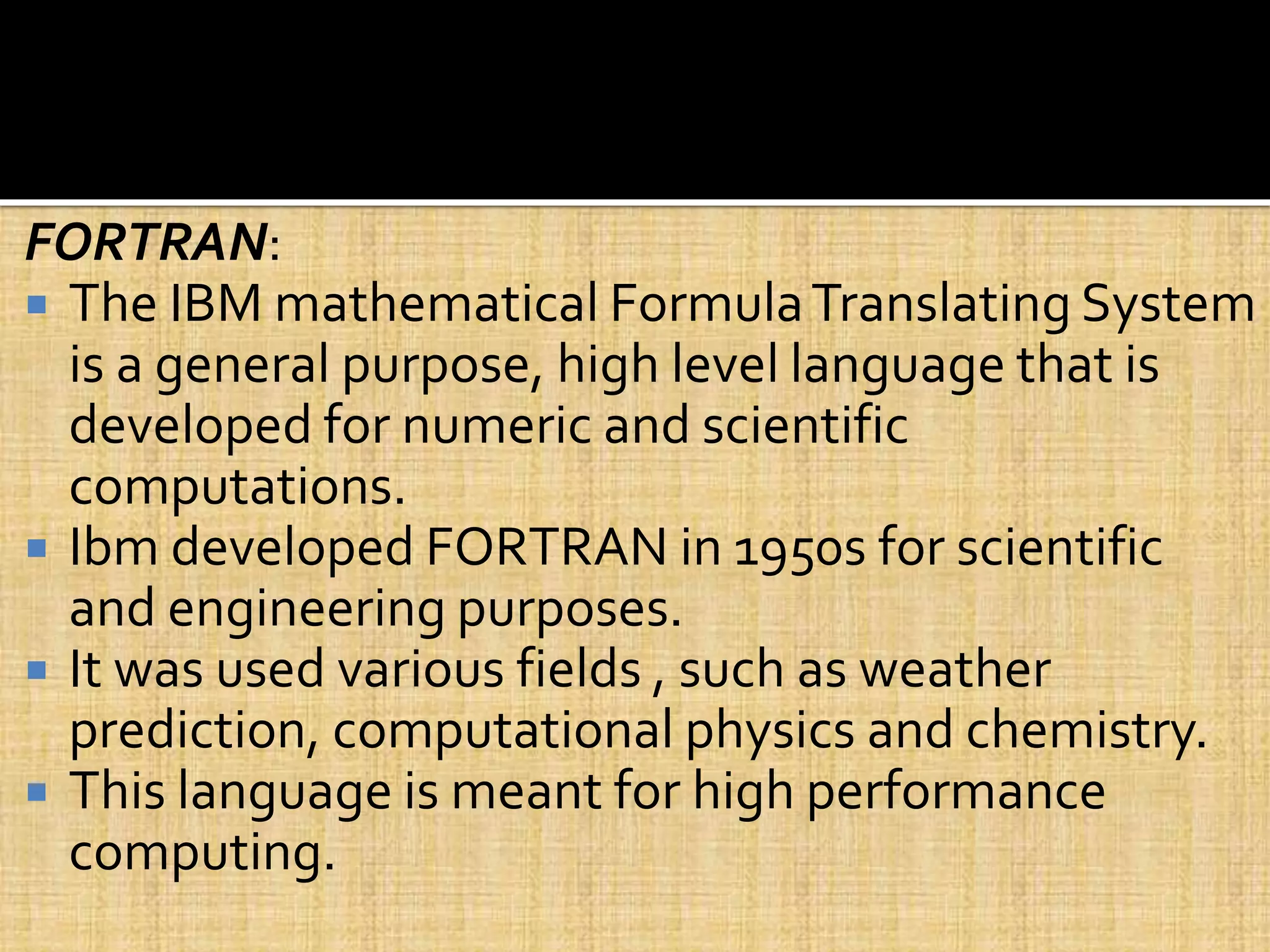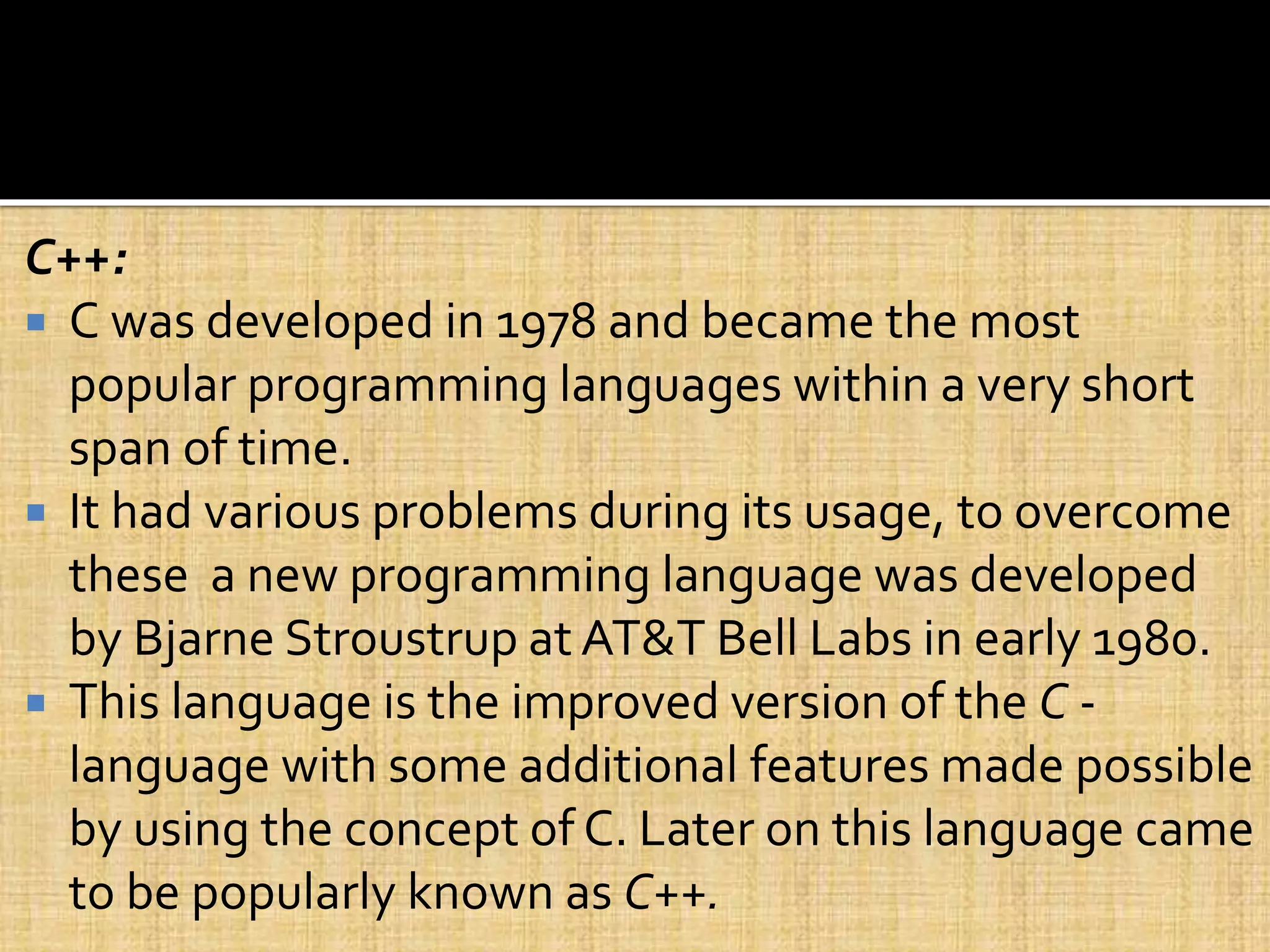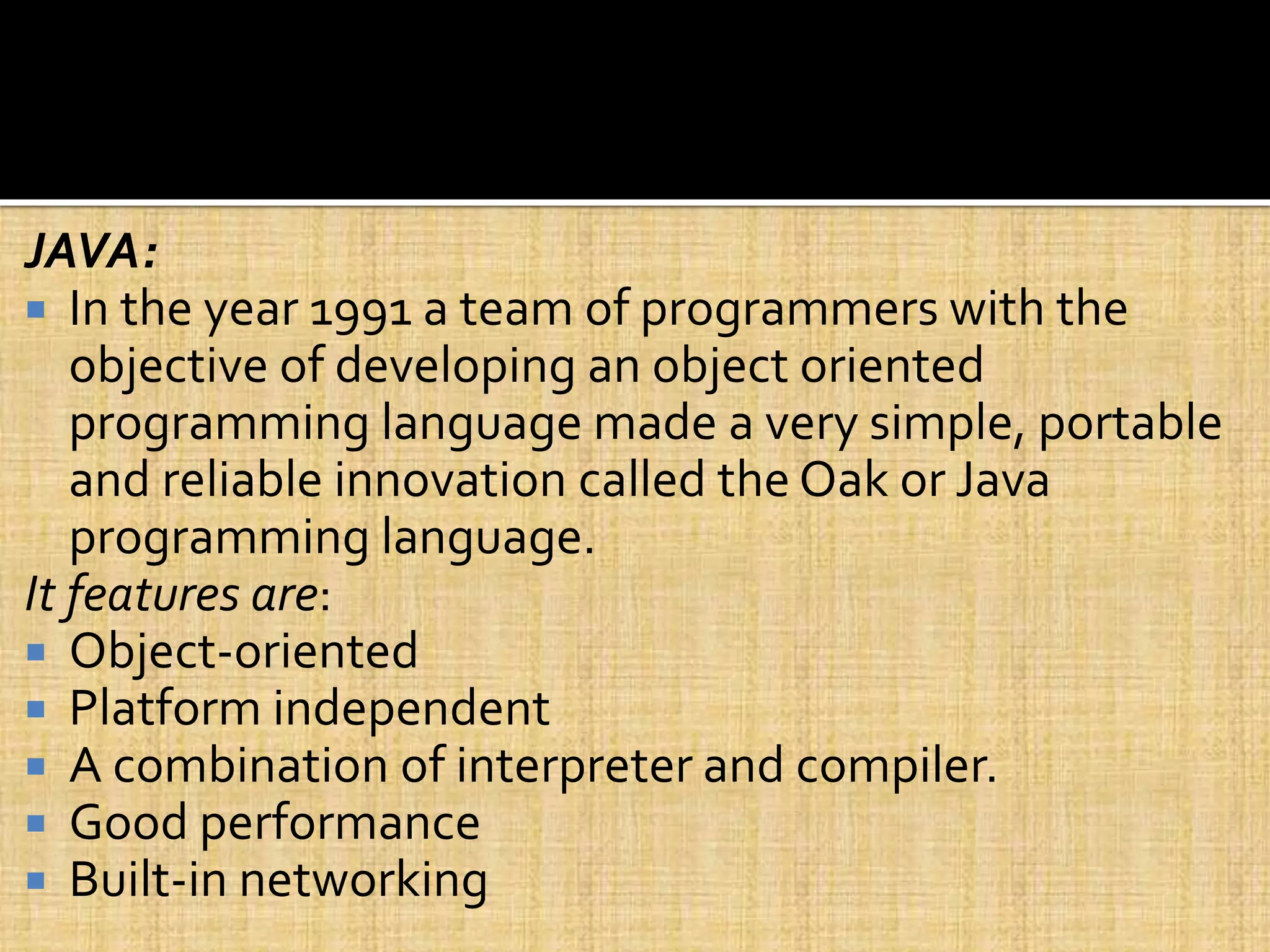The document discusses the history and characteristics of different generations of programming languages. The first generation used machine language, which was complex and error-prone. The second generation introduced assembly language, which was easier to use but still machine-dependent. The third generation saw high-level languages like BASIC, COBOL, FORTRAN and C that had benefits like readability, ease of debugging and lower costs, but provided less hardware control.


